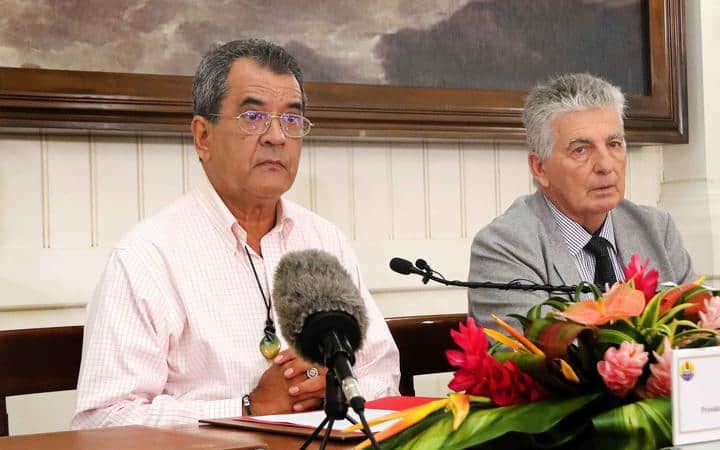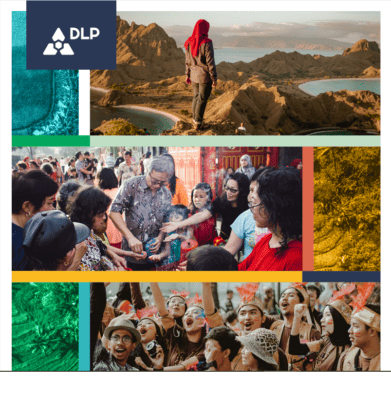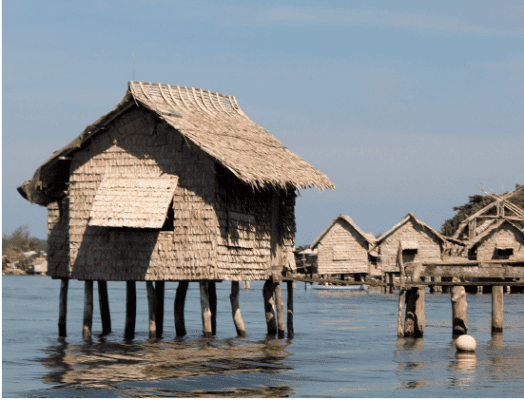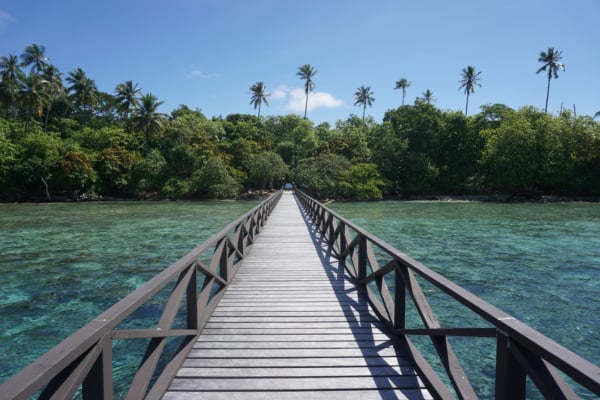Image: President of French Polynesia.
Pacific island countries (PICs) were not spared the consequences of the coronavirus pandemic, better known as COVID-19. Nevertheless, decisive, determined and collaborative leadership bolstered by geography and social capital proved indispensable in Pacific islanders’ response to COVID-19. Pacific island leaders demonstrated confident and determined leadership despite having inadequate resources to fight the invisible enemy. So what can we learn from the Pacific leadership response?
How did PICs react?
Firstly, Pacific leaders willingly accepted world expert advice and acted instantaneously – although some felt PICs should have closed their borders even earlier. The islands’ vulnerability to external exposure and natural shocks made it necessary for leaders to be firm. Even before the World Health Organisation (WHO) declared COVID-19 a pandemic on 11 March 2020, the Marshall Islands declared a State of Emergency (SOE) on 7 February, restricting air and sea travel.
On 24 February, Samoa imposed compulsory screening of passengers at all ports arriving from or transitioning through China, Hong Kong, Macau, Japan, Singapore, Thailand, South Korea and Italy to self quarantine. Passengers were asked to quarantine for 14 days in the country they were travelling from, before travelling to Samoa – with a medical certificate confirming virus-free status.
Other PICs reacted to reports of increased COVID-19 fatalities in Asia and Europe. The first confirmed case in the region was a Tahitian representative in the French National Assembly, which led to border closures on 7 March 2020. Fiji declared a mandatory 14-day quarantine and stricter border controls for air and sea travelers on 19 March. Lautoka city, where Fiji’s first case was confirmed initiated lockdown from midnight that same day. Followed by the lockdown of Suva two weeks later with tighter enforcement of social distancing, imposition of a 8pm-5am national curfew, and a stop to inter-island sea and air travel.
Tonga declared a SOE on 20 March followed by Solomon Islands on 27 March with similar restrictions, all following the WHO advisory on handwashing and social distancing. Pacific island leaders responded to expert advice in unison and acted decisively to control the spread of the virus by shutting down national borders.
Is being an island country a challenge or an opportunity?
The fact that all PICs, with the exception of Papua New Guinea (PNG), have international maritime borders is a bonus to their containment effort. Travel restrictions and the closure of public amenities and institutions contributed to restraining the spread of COVID-19. Contact tracing and isolation were also successful in Fiji that recorded 18 confirmed cases. Their isolation and contact tracing processes were effective as they managed to identify five sources of infection. Close contacts could then be quarantined, tested, and if confirmed to have COVID – isolated and treated.
Samoa, Tonga, Fiji and New Zealand were still recovering from the 2019 measles outbreak when COVID-19 arrived. The measles outbreak alerted Pacific leaders to the perils of epidemics in the region. Experiences with measles testing, nation-wide vaccinations and contact tracing became valuable skills during the COVID-19 response. In both instances, decisive and determined leadership by national frontline agencies became critical in containment efforts.
A visible feature of the Pacific leadership response to COVID-19 was the ability to implement decisions with conviction, confident that a particular course of action was the best, given the circumstances. Countries like Fiji and PNG quickly revamped their molecular labs, while others, including Solomon Islands relied on Australian labs – until China, Australia, and New Zealand established a Solomon Islands COVID-19 testing laboratory. Leadership in PICs recognised the grave danger posed by COVID-19 and acted decisively based on expert advice.
Leadership ability in respective PICs to collaborate, despite disagreements on exact approaches, demonstrated good leadership in volatile situations. Tonga collaborated with stakeholders such as the Reserve Bank to develop an economic and social stimulus package – as did Samoa, Fiji, Vanuatu, Tuvalu, and Solomon Islands. Some economic packages include suspension of loan repayments, relief support to laid-off workers, free transportation to home villages, additional support to sponsored and private students, and nationals stranded overseas and other important services. Leaders in PICs agree that this is a fight they cannot afford to lose. To make matters worse, Tropical Cyclone Harold ravaged Solomon Islands, Vanuatu, Fiji and Tonga in the peak of the COVID-19 scare, pushing leaders’ resilience further. Despite the dire need for international relief support following Tropical Cyclone Harold, Vanuatu and Tonga’s borders remain closed in an effort to prevent a coronavirus disaster.
How did good leadership shape the response?
Decisive, determined and collaborative leadership aided by social capital through the wantok system, Fa’a Samoa, Faka Tonga, and other networks across Oceania mitigated potential livelihood disasters during the pandemic. Such informal networks exist globally and in PICs, family and relational support have always been a benefit during crises. Supported by local customary land tenures that promote a subsistence economy which can also be the basis for successful sustainable businesses must be acknowledged.
During the COVID-19 lockdown, those who suddenly became unemployed returned to their local communities; and with support from relatives, continue to sustain themselves and their families. However, there may be tensions accompanying such repatriation.
What can we learn from Pacific leadership?
There are certain lessons observed from the Pacific leadership experience that will help shape future leadership.
- First, decisive, determined and collaborative leadership is essential in pandemics and disasters.
- Second, expert technical advice must be sought, verified and acted upon in unison by the entire global community in future pandemics.
- Third, leadership in PICs during COVID-19 was effective because of collaboration and clear communication between leaders at the national level and in other public institutions; the private sector; civil society organisations, and local communities.
- Finally, Pacific leaders must treasure, strengthen and utilize informal social capital and safety nets that protect and sustain Pacific island families in times of distress. Developmental leadership must recognize such socio-economic and cultural capital and endeavour to strengthen them for the future.
Tweet us @DLProg #LeadershipObvs
This blog is published as part of DLP’s response to COVID-19.










